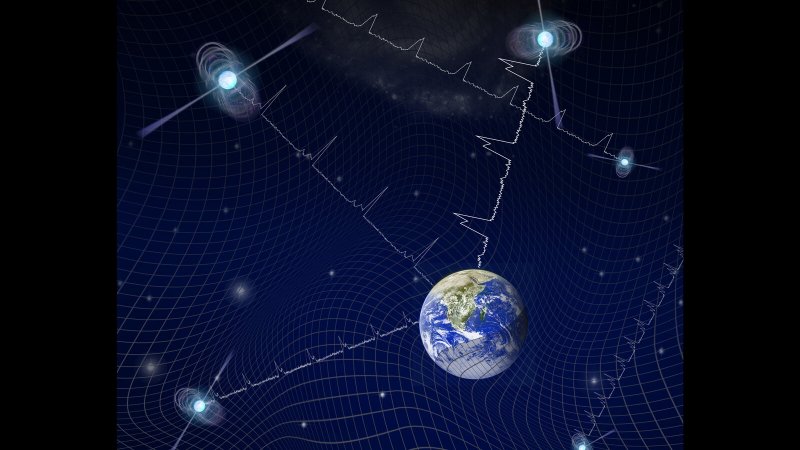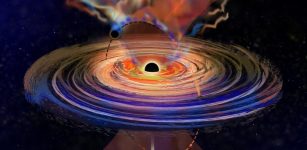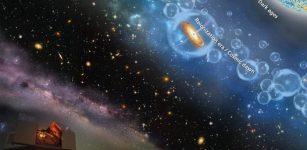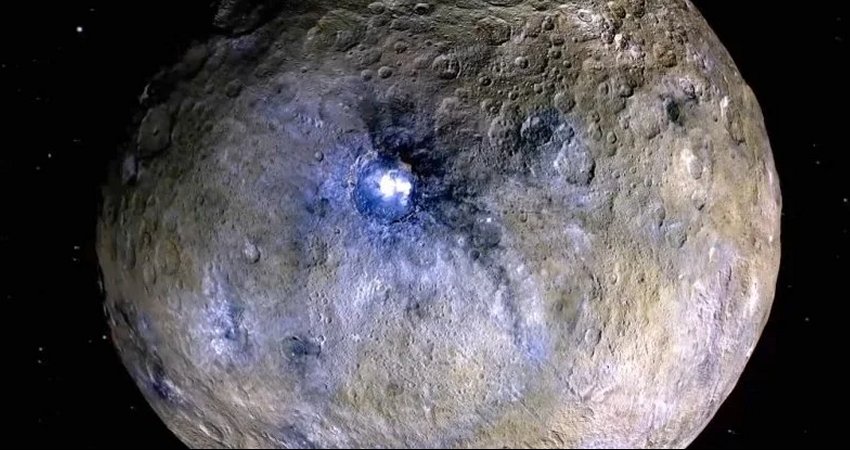‘Galaxy-Sized’ Observatory And Search For Unique Signal From Gravitational Waves
Eddie Gonzales Jr. – MessageToEagle.com – Scientists have used a “galaxy-sized” space observatory to find possible hints of a unique signal from gravitational waves, or the powerful ripples that course through the universe and warp the fabric of space and time itself.
 This illustration shows the NANOGrav project observing cosmic objects called pulsars in an effort detect gravitational waves – ripples in the fabric of space. The project is seeking a low-level gravitational wave background signal that is thought to be present throughout the universe. Credit: NANOGrav/T. Klein
This illustration shows the NANOGrav project observing cosmic objects called pulsars in an effort detect gravitational waves – ripples in the fabric of space. The project is seeking a low-level gravitational wave background signal that is thought to be present throughout the universe. Credit: NANOGrav/T. Klein
For over 13 years, NANOGrav researchers have pored over the light streaming from dozens of pulsars spread throughout the Milky Way Galaxy to try to detect a “gravitational wave background.” That’s what scientists call the steady flux of gravitational radiation that, according to theory, washes over Earth on a constant basis. The team hasn’t yet pinpointed that target, but it’s getting closer than ever before,” Joseph Simon, an astrophysicist at the University of Colorado Boulder and lead author of the new paper, said in a press release.
“We’ve found a strong signal in our dataset,” said Simon, a postdoctoral researcher in the Department of Astrophysical and Planetary Sciences. “But we can’t say yet that this is the gravitational wave background.”
Through their work on NANOGrav, Simon and Comerford are part of a high stakes, albeit collaborative, international race to find the gravitational wave background. Their project joins two others out of Europe and Australia to make up a network called the International Pulsar Timing Array.
The NANOGrav team observe as many pulsars as possible for as long as possible. To date, the group has observed 45 pulsars for at least three years and, in some cases, for well over a decade.
Detecting that background noise would be a major scientific achievement, opening a new window to the workings of the universe, he added. These waves, for example, could give scientists new tools for studying how the supermassive black holes at the centers of many galaxies merge over time.
“These enticing first hints of a gravitational wave background suggest that supermassive black holes likely do merge and that we are bobbing in a sea of gravitational waves rippling from supermassive black hole mergers in galaxies across the universe,” said Julie Comerford, an associate professor of astrophysical and planetary science at CU Boulder and NANOGrav team member.
At least according to theory, merging galaxies and other cosmological events produce a steady churn of gravitational waves. They’re humungous — a single wave, Simon said, can take years or even longer to pass Earth by. For that reason, no other existing experiments can detect them directly, said Simon, and added that other observatories search for gravitational waves that are on the order of seconds.
“We’re looking for waves that are on the order of years or decades, the scientist said.”
Gravitational waves alter the steady pattern of light coming from pulsars, tugging or squeezing the relative distances that these rays travel through space. Scientists, in other words, might be able to spot the gravitational wave background simply by monitoring pulsars for correlated changes in the timing of when they arrive at Earth.
“These pulsars are spinning about as fast as your kitchen blender,” Simon said. “And we’re looking at deviations in their timing of just a few hundred nanoseconds.”
“We walked through each of the pulsars one by one. I think we were all expecting to find a few that were the screwy ones throwing off our data,” Simon said. “But then we got through them all, and we said, ‘Oh my God, there’s actually something here.'”
The researchers still can’t say for sure what’s causing that signal. They’ll need to add more pulsars to their dataset and observe them for longer periods to determine if it’s actually the gravitational wave background at work.
Written by Eddie Gonzales Jr. – MessageToEagle.com Staff










